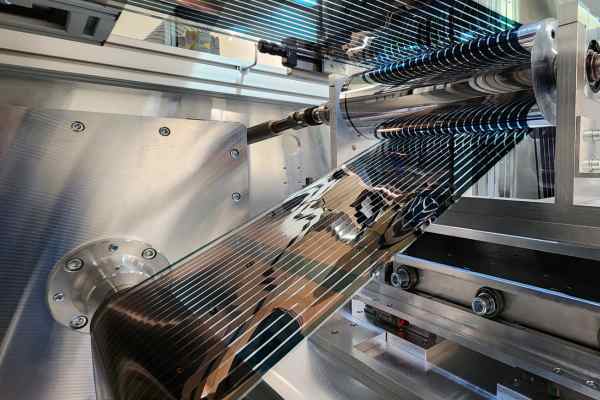Printed solar is on a roll
Flexible solar tech is headed for our backyards – and maybe even our backpacks.

Flexible and lightweight solar resembling a thin film that you can roll up or bend is now rolling off the production line in Victoria.
The CSIRO recently opened new $6.8 million facility in Clayton which is dedicated to getting these printed solar cells, a contrast to the heavy silicon-based solar cells we’re used to seeing, out of the lab and into real-world.
While traditional solar panels are great for rooftops and solar farms, they’re not very portable. Printed solar, on the other hand, could be used on a range of surfaces to generate clean, low cost, renewable energy.
"This printed solar technology unlocks entirely new applications for affordable, versatile and sustainable energy generation"
The facility is the result of more than a decade of research, though the leader of CSIRO’s Renewable Energy Systems Group, Dr Anthony Chesman, said printed flexible solar is not intended to replace silicon rooftop panels, but rather to complement them.
"This printed solar technology unlocks entirely new applications for affordable, versatile and sustainable energy generation," he said.
CSIRO’s printed solar is created on thin plastic film, making it lightweight and flexible, and it’s also versatile with potential uses in urban construction, space, defence, mining, emergency management, disaster relief, and wearable technology.
The printed solar does not require expensive materials, such as the gold and silver used in other cells. These cells are made using something called perovskite, a material that’s gaining attention in the solar world for being both cheap and effective.
High production, low cost
CSIRO’s facility can produce up to 14,000 solar cells in a single day, and its low cost means it’s more accessible for smaller companies or those just starting with solar.
CSIRO, which is supported by Australia’s Renewable Energy Agency (ARENA) is currently looking for partners to take this tech to market. With this in mind, its opening its doors to companies keen to gain access to the lab’s equipment and researchers.
CSIRO’s Professor Elanor Huntington describes it as a stepping stone for Australian manufacturers to adapt the tech to their offerings. “Industry partners can access both researcher expertise and specialised equipment to improve and apply flexible solar technology in novel ways, anywhere there is sunlight,” she said.
Newcastle University’s Institute for Energy and Resources (NIER) has also spruiked its printed solar production capabilities in recent years. CSIRO, however, says its new facility isn’t stopping at solar – it’s interested in exploring other printable tech, like batteries and hydrogen energy offerings.
The pilot-scale roll-to-roll printing, coating and lamination machine was installed recently in a purpose-built climate-controlled workspace. The printed solar cells are made from perovskite, a class of emerging solar cell material that can be formulated into inks and used in industrial printers. In this case the perovskite is printed on long, continuous rolls of flexible film. According to the CSIRO, the printing system is highly automated and can produce up to 14,000 test solar cells daily. Multiple printing and laminating steps are performed in a single continuous operation, cutting down on production costs and the upfront investment needed to get started.





